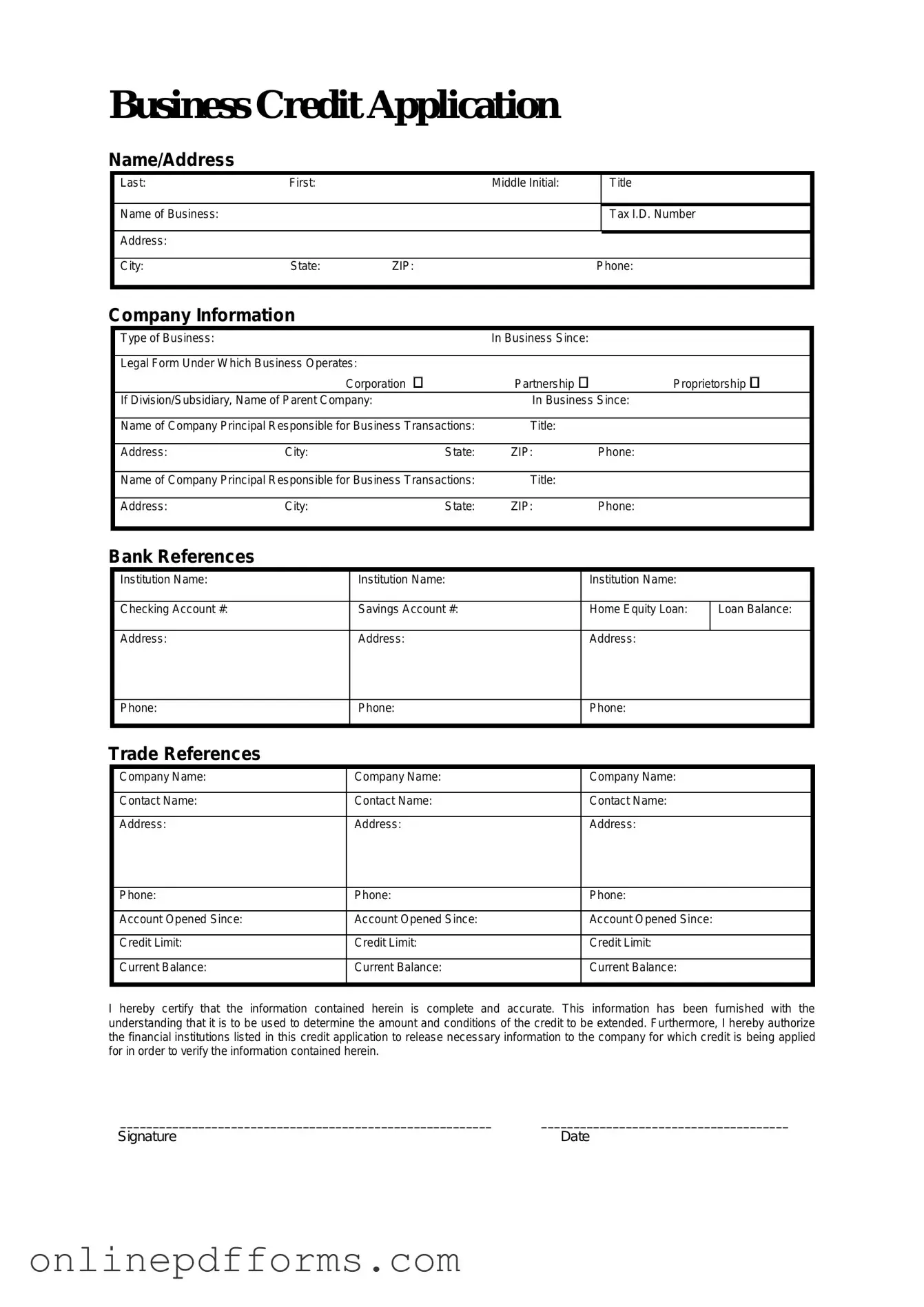The Business Loan Application form serves a similar purpose to the Business Credit Application form. Both documents are used by businesses seeking financial support, whether through credit or loans. They typically require information about the business's financial history, ownership, and operational structure. By providing this information, businesses can demonstrate their creditworthiness to lenders, helping them secure necessary funds for growth or operational expenses.
The Vendor Credit Application is another document akin to the Business Credit Application. This form is specifically used when a business seeks credit from a supplier or vendor. It includes details about the business's financial stability and payment history, similar to the Business Credit Application. The goal is to establish a trusting relationship between the vendor and the business, ensuring that the vendor feels confident extending credit terms.
A Personal Guarantee form often accompanies the Business Credit Application. While the Business Credit Application focuses on the business itself, the Personal Guarantee form requires an individual, usually a business owner, to pledge personal assets as collateral. This document reinforces the commitment of the business owner to repay any debts, providing additional security to the lender.
The Business Partnership Agreement can also be compared to the Business Credit Application. Although it primarily outlines the terms of a partnership, it often includes financial information about the business and its partners. Lenders may request this agreement to understand the financial responsibilities and liabilities of each partner, which can influence their decision on extending credit.
The Financial Statement is another crucial document that shares similarities with the Business Credit Application. This statement provides a snapshot of a business's financial health, detailing assets, liabilities, income, and expenses. Lenders often require this document alongside the Business Credit Application to assess the business's ability to repay any credit extended.
The Business Plan is a forward-looking document that outlines a company's strategy and goals. While the Business Credit Application focuses on past financial performance, the Business Plan provides insight into future prospects. Lenders may review both documents together to gauge not only the current state of the business but also its potential for growth and success.
The Trade Reference Form is a document that businesses can use to provide references from other companies with whom they have established credit relationships. This form complements the Business Credit Application by offering potential lenders a way to verify the business's credit history and payment behavior with other vendors, adding credibility to the application.
The Credit Report is another document that parallels the Business Credit Application. A credit report provides a detailed history of a business's credit activity, including payment history and outstanding debts. Lenders often review this report in conjunction with the Business Credit Application to assess the risk associated with extending credit to the business.
The Business Registration Certificate is a document that verifies a business's legal existence. While the Business Credit Application focuses on financial aspects, the registration certificate assures lenders that the business is legitimate and compliant with local regulations. This document helps establish trust between the lender and the business.
Lastly, the Accounts Payable Aging Report is similar to the Business Credit Application in that it provides insight into a business's financial obligations. This report details outstanding invoices and payment timelines, helping lenders understand the business's cash flow and ability to meet its obligations. By reviewing this report, lenders can make informed decisions regarding the creditworthiness of the business.
